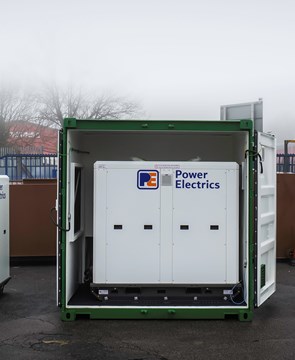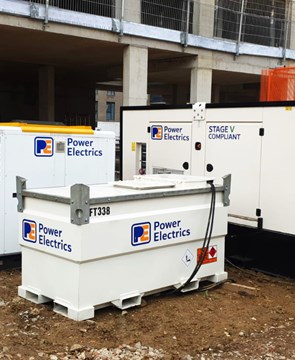Demand Response, STOR and making the most of your standby generator
An introduction
Every winter, we face the familiar risk of increased energy shortages and electricity blackouts. This year, National Grid warned that spare capacity in the system had fallen to just 1.2% - the worst margin in a decade. And in November they were forced to issue the first Notification of Inadequate System Margin (NISM) since 2012, requesting an additional 500 megawatts of power from last resort measures.
It’s not a new problem. With demand for electricity spiking at certain times of the day and year, the National Grid face a constant challenge to manage peak consumption and balance the network. However, with EU regulations forcing coal fired power plants to close and an increased move towards unpredictable energy generation sources such as wind and solar power, the grid must find new ways of keeping the lights on each winter.
“Historically, polluting peaking power stations have been used to cover the shortfalls,” explains Dan Taylor, Managing Director of Camborne Energy Storage Ltd. “But a significant shift in UK energy patterns, coupled with the increased penetration of intermittent renewables, has resulted in the need for a more flexible, real time system.”
In recent years, this system has evolved to include the use of standby generators. AMPS (The Association of Manufacturers and Suppliers of Power Systems and Ancillary equipment) explains: “The margin to cover energy shortfalls needs to be responsive, stable and efficient. Diesel generators can respond almost instantly and have become a valuable contributor to the energy mix.”
Understanding Demand Response
Welcome to the 2nd instalment of our 3 part blog series on demand response, STOR and making the most of your standby generator.
We asked Dan Taylor, Managing Director at Camborne Energy Storage Ltd, about Demand Response and the energy market. Here's what you need to know:
1. What is Demand Response (DR)?
Demand Response, or DR, is one of the methods used by National Grid to reduce consumption at peak times. Instead of generating additional electrical capacity, the grid asks major energy users to reduce their demand on the network, either by reducing their load or by transferring the load to their own standby generators.
2. Why is Demand Response necessary?
Many utilities, such as National Grid, suffer from seasonal fluctuations or unpredicted peaks in power requirements. These peaks could be the result of planned events, such as lighting up time or the TV pick-up. They could also be due to plant failure at generating stations, resulting in a shortfall in power production.
Historically, polluting peaking power stations have been used to cover the shortfalls. But a significant shift in UK energy patterns, coupled with the increased penetration of intermittent renewables and the electrification of heat and vehicle networks, has resulted in the need for a more flexible, real time system.
3. How has the energy market changed and what can we expect to see in the future?
The DR market as a whole has commercialised significantly in the last 10 years. Due to the intermittency of renewable generation, the increase in local network peaks and troughs and the removal of legacy power plant, operating our system more dynamically will require more DR to support it. The recognition of a need for DR by DNOs, who take electricity from the National Grid and distribute it regionally, also demonstrates the potential for the DR market to grow.
4. What will be the impact of battery storage systems?
As the UK moves towards a more intermittent system, storage systems as a whole will certainly play an important part of the balancing schemes, by they will remain only one part of a large toolbox.
We asked Camborne Energy Storage Ltd, about STOR and how you can turn your standby generator into a money making asset. Here’s what you need to know:
5. What is Short Term Operating Reserve (STOR)?
One way in which Demand Response is achieved is through the procurement of Short Term Operating Reserve (STOR). When demand outstrips supply, for example on a cold snap during winter, or when National Grid loses a large generating unit without notice, those contracted to provide STOR may be called upon to reduce their consumption for a short period of time (usually 1-2hrs) to support system stabilisation.
Reducing consumption from the grid could be as simple as turning off heating, ventilation and air conditioning (HVAC) systems. Alternatively, companies can transfer their load to an onsite generator and export spare capacity from that generator back to the grid as well as offsetting their existing load on the network.
6. How can STOR benefit businesses?
STOR offers any generator owner the chance to maximise their asset by running the asset on load. As opposed to offload testing, which doesn’t really make the engine work, the ad-hoc calls for STOR allow fuel to continue circulating in the tank and the engine to have a proper run on load, all whilst providing contingency power to the UK’s system.
On top of this, if you are enrolled in STOR, you are eligible for a new revenue stream. National Grid rewards participants for the amount of power and number of hours per day that they can reduce or provide power.

7. How can companies get involved?
If you have a generating plant greater than 3MW installed, then you can tender to National Grid directly for STOR.
National grid's STOR programme requires:
- A minimum generation or load reduction of 3MW (this can be across multiple sites)
- Delivery of full MW within 240 minutes of receiving instructions from National Grid
- The capacity to provide full MW for at least 2 hours
- A recovery period of less than 20 hours
- The ability to provide STOR at least 3 times a week
Commercial Aggregation Services
However, companies that don’t meet the minimum volume requirements can still get involved with STOR by going through a commercial aggregation service. National Grid publishes an up to date list of commercial aggregation services on their website.




